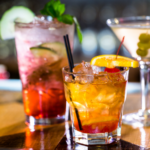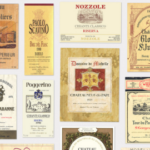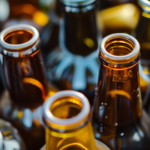The world of alcohol is one of constant motion, as dynamic and changing as the very drinks that it serves up. From the rise of craft spirits to the increasing role of digital interfaces, the landscape of libations is continually shifting. This not only affects the beverages in your glass but the businesses that make and sell them.
Here, we take a closer look at the noteworthy trends that are marking the path of the alcohol industry. For all the bartenders, sommeliers, and industry leaders, this is a peek into what’s brewing and the keys to remaining one step ahead.
A Shift in Consumer Preferences
Pallets are evolving more swiftly than a mixologist’s latest concoction. The period from 2024-2027 observed a significant shift towards quality over quantity. This isn’t a new concept, but it’s becoming the modus operandi for a broader demographic.
The Premiumization Trend:
Consumers are becoming less likely to pick up the cheapest bottle of wine or beer on the shelf. Rather, they’re inclined to spend a little more for higher quality and taste. In essence, premiumization is growing as people attach a greater value to what’s in their glasses.
Health-Conscious Drinking:
In a world where wellness is a priority, even alcoholic beverages aren’t immune to the health wave. Low-alcohol content and health-focused ingredients like organic grains and natural sweeteners are floating to the top and are here to stay.
Experiential Drinking:
Millennials and Gen Z are driving an experience-oriented market. They aren’t just buying a product; they’re investing in a story, a heritage, and an experience. This has given rise to themed bars, distillery tours, and tasting events as integral parts of the drinking experience.
The Rise of ‘Local’ and ‘Craft’:
Consumers are placing a premium on products with a local tie or a craft ethos. This trend is propelling smaller, independent labels to the forefront as they highlight their authenticity and individuality.
Technological Advancements in Production and Marketing
Technology is no longer a background player in the alcohol industry; it’s onstage, leading the show and in full costume. Production lines are being automated and fine-tuned for efficiency and quality, marketing techniques are increasingly sophisticated, and the customer experience is becoming more personalized.
Smart Brewing and Distilling:
Breweries and distilleries are adopting technologies like AI and IoT for process optimization and quality control. These smart systems monitor everything from temperature to ingredient quantities, consistently producing a superior product.
E-commerce and the On-Demand Market:
The convenience trend has spurred an on-demand alcohol market. E-commerce sales are skyrocketing, and services like instant delivery are becoming the norm, making alcohol more accessible than ever. Online platforms are also perfecting the art of personalized recommendations, creating a seamless shopping experience.
Digital Influence and Social Media Marketing:
The digital sphere is a kingmaker, with social media platforms wielding a significant influence. Brands are leveraging these channels to create engaging content and build communities around their products. Influencer collaborations and online tasting events are just the start of how digital marketing is reshaping the industry.
Blockchain for Transparency:
Blockchain technology is gaining traction to provide consumers with a transparent view of the product’s origins. This not only builds trust but also helps combat counterfeit products, making sure that what you’re drinking is what you think it is.
Sustainability and Corporate Responsibility
The trend towards sustainability and corporate responsibility is not a mere ripple; it’s a tsunami transforming the industry. From production practices to packaging, consumers are expecting a responsible approach to the environment.
Eco-Friendly Packaging and Production:
The push towards eco-friendly practices has led to innovations in packaging, with a focus on recyclable and biodegradable materials. Production is also becoming greener, with an increase in solar-powered distilleries and zero-waste practices.
Ethical Sourcing and Labor Practices:
Consumers are becoming more socially conscious. They want to know that the ingredients in their drinks are sourced ethically, and the people making these drinks are treated fairly. Brands are under more scrutiny than ever to ensure their entire supply chain is responsible.
Community Involvement and Goodwill Projects:
Brands that show a commitment to their communities and participate in goodwill projects are generating a positive image. From supporting local charities to disaster relief initiatives, the role of alcohol companies in societal welfare is expanding.
Global and Regional Market Trends
The global alcohol market is as diverse as the many people who partake in its offerings. Regional variations and cultural distinctions continue to shape industry trends.
Asia-Pacific’s Ascendancy:
The Asia-Pacific region is emerging as a powerhouse in the global alcohol market. Rapid urbanization, a growing middle class, and a burgeoning interest in Western drinking culture are driving significant market growth, particularly in China and India.
The European Landscape:
Long considered the heartland of wine and beer, Europe is witnessing a slowdown in consumption. This is partly due to changing drinking habits, with consumers opting for less but higher quality, as well as an increased interest in various spirits and cocktails.
North America’s Craft Boom:
Craft breweries and distilleries are on the rise in the United States and Canada, contributing to a renaissance in local and artisanal products. This is also mirrored in the desire for unique, small-batch offerings.
Latin America and the Caribbean’s Distinctive Spirits:
The rum and tequila markets are experiencing a renaissance, with a renewed focus on tradition and authenticity. This region’s spirits are making waves globally as consumers seek out new and exciting options.
Regulatory Changes
Laws and regulations form the guardrails of the alcohol industry, and they’re constantly being adjusted to reflect current social, economic, and health trends.
Health and Safety Regulations:
Governments are implementing stricter health and safety regulations, particularly regarding responsible drinking campaigns and the prevention of alcohol-related harm.
Taxation and Trade Agreements:
Tax policies and international trade agreements can create significant market shifts. Changes in tariffs and duties can affect the cost and availability of alcohol, impacting consumer behavior and brand strategies.
Licenses and Distribution Laws:
Local and state licenses, along with distribution laws, are also seeing changes. These can impact the way alcohol products are marketed and sold, influencing the retail landscape and the types of products available to consumers.
Conclusion
The period from 2024-2027 is just a snapshot of the eternal flow of trends in the alcohol industry. It’s a testament to how the market is always on the move, adapting to the tastes and needs of the drinking public. If there’s one takeaway for businesses in this realm, it’s to keep a finger on the industry’s pulse and be ready to shake up the status quo. By doing so, companies can craft their own success story in the grand narrative of the global spirits landscape.













